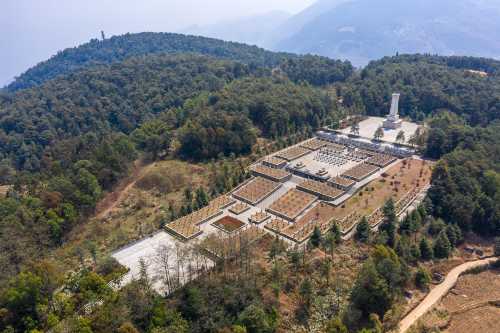Popular Trip Moments
📍LongLing | Click now! Discover hidden gems in Longling County. | Welcome to Baoshan, Yunnan! | Battle of Songshan Site | Baoshan-Dehong 7-Day Tour | A Super Detailed Guide to Help You Explore Both Places | Baoshan Songshan Anti-Japanese War Site | 9.18 Songshan Battle Memorial Park - In memory of national heroes. | Banglazhang Hot Spring Resort: Truly the "First Miracle Soup of Western Yunnan" | Have you ever heard of hot springs that can beautify your skin and cure diseases? | Encounter with the miraculous herb in Longling, Yunnan | It's the perfect time to eat Dendrobium in winter | Longling Banglazhang Hot Spring in Yunnan, the first wonder soup in Western Yunnan | I did only three things in Baoshan, Yunnan: drinking coffee, soaking in hot springs, and visiting ancient towns
Popular Travel Types
Recommended Attractions at Popular Destinations
Bangkok attraction near me | Manila attraction near me | Tokyo attraction near me | Taipei attraction near me | Hong Kong attraction near me | Seoul attraction near me | Kuala Lumpur attraction near me | Los Angeles attraction near me | Shanghai attraction near me | New York attraction near me | Shenzhen attraction near me | Osaka attraction near me | Singapore attraction near me | London attraction near me | Guangzhou attraction near me | San Francisco attraction near me | Beijing attraction near me | Macau attraction near me | Bali attraction near me | Jakarta attraction near me | Paris attraction near me | Ho Chi Minh City attraction near me | Istanbul attraction near me | Phuket attraction near me | Chicago attraction near me | Seattle attraction near me | Toronto attraction near me | Orlando attraction near me | Cebu attraction near me | Chiang Mai attraction near me
Popular Restaurants in Longling
渔歌酸菜鱼(龙陵店) | 龙福寿(热泉路店) | 邻客披萨 | 芒市线家傣味饭店(龙陵店) | 安余山庄 | 傣乡小卜少饭庄(龙陵店) | 龙陵龙临温泉度假酒店·餐厅 | 马晓回族饭店 | 神泉山庄 | 老食府黄山羊肉馆(龙陵店) | 怡红饭店(龙陵店) | 恩黄饭店 | 黄草坝黄焖鸡饭店(龙陵店) | 凯龙假日大酒店大堂吧 | 清枫古院 | MING DONG XIAO CHI | 北极光火塘吧冷饮店 | Chaowangfanguan | 兰贵饭店 | 泡芙蜜语 | 四川李记辣妈冒菜馆(兴农路店) | 千里香餐饮(松山路店) | 强记清汤黄牛肉(龙陵店) | 蓝色海岸音乐酒吧 | 阿佬俵(龙陵店) | 伊龙园饭店 | 天道和击水三千休闲吧 | 美味罗非鱼火锅店(龙陵店) | 鱼霸鲜鱼馆(龙陵店) | 丰路记羊肉米线
Popular Ranked Lists
Top 10 Local Restaurants in Daocheng | Top 10 Local Restaurants in Wanning | Top 7 Best Things to Do in Jining | Popular Best Things to Do in Jingmen | Top 10 Local Restaurants in Enshi City | Popular Best Things to Do in Nujiang | Top 10 Local Restaurants in Lingshui | Popular Trending Restaurants in Osaka | Popular Best Things to Do in Guang'an | Popular Premium Hotels in Korcula | Top 9 Local Restaurants in Changshu | Top 10 Local Restaurants in Wenchang | Top 5 Best Things to Do in Huaihua | Top 9 Local Restaurants in Changde | Popular Premium Hotels in Fahaheel | Top 9 Local Restaurants in Ganzhou | Popular Premium Hotels Near Gorod Novosibirsk | Top 9 Local Restaurants in Deyang | Top 3 Best Things to Do in Fuding | Top 10 Local Restaurants in Yangjiang | Top 10 Local Restaurants in Anyang | Top 10 Local Restaurants in Rongcheng | Popular Premium Hotels in Durango | Popular Premium Hotels in Phuc Yen | Top 9 Local Restaurants in Zigong | Popular Best Things to Do in Huainan | Popular Best Things to Do in Langfang | Popular Best Things to Do in Suining | Top 5 Local Restaurants in Xuancheng | Top 4 Best Things to Do in Jinjiang
Payment Methods
Our Partners
Copyright © 2025 Trip.com Travel Singapore Pte. Ltd. All rights reserved
Site Operator: Trip.com Travel Singapore Pte. Ltd.
Site Operator: Trip.com Travel Singapore Pte. Ltd.





















